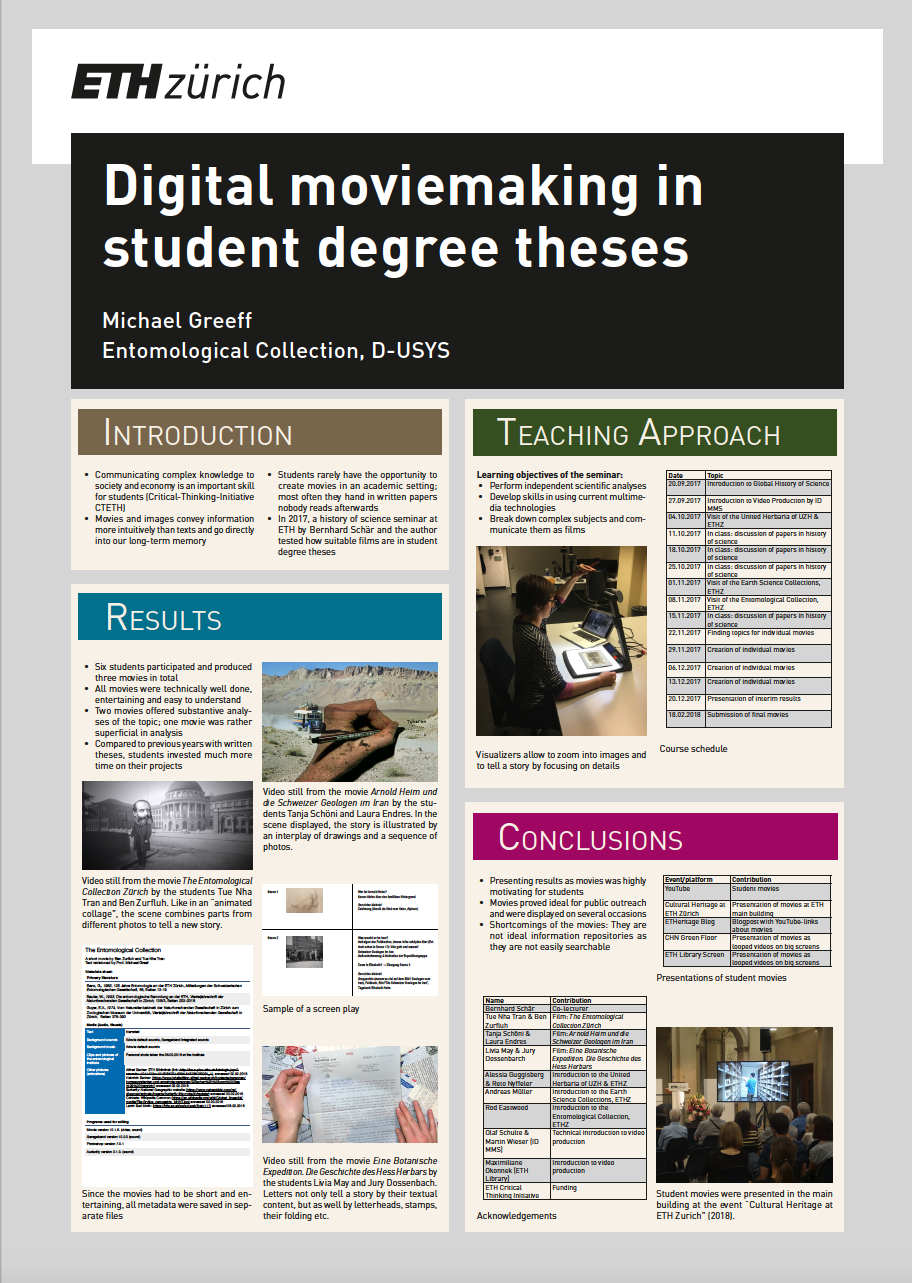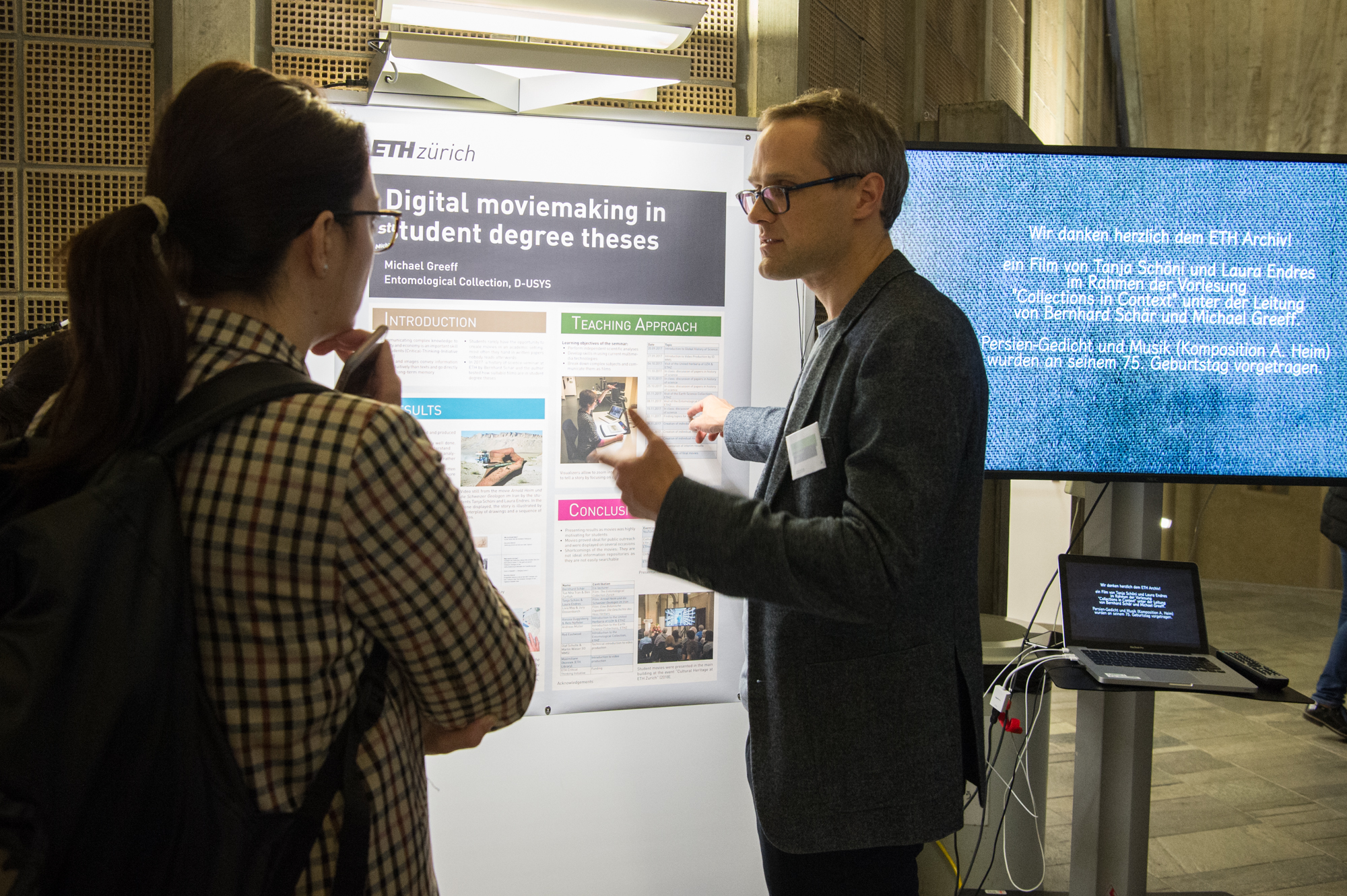Digital moviemaking in student degree theses
Abstract
We are confronted by multimedia every day. Since around 1997, the time we spend on electronic media surpasses the amount of time we spend in face to face interactions. With today’s flood of information, gaining the consumer’s attention and conveying information has become ever more challenging and competitive. In this respect, mov-ies and images perform much better than written words: Texts are processed by our working memory, which can hold only seven objects at a time; visual information, in contrast, goes directly into our long-term memory and can be memorized in much larger quantities. Current university students not only consume multimedia content, they increasingly appear as producers, mostly on social media platforms. So it is not surprising that young people are nowadays called ‘digital natives’. However, despite their inherent aptitude with new media formats, university students rarely have the opportunity to apply their experience in a more academic setting. They are most often asked to hand in research papers, which thereafter end up in the supervisor’s drawer without having any further impact. This stands in stark contrast with efforts such as ETH’s Critical Thinking initiative, which amongst others, aims at fostering student competence in sharing knowledge with peers and society. In the autumn semester of 2017, ETH historian Bernhard Schär and the author introduced a multimedia compo-nent to their course “Historical Collections in Context: Putting Butterflies, Stones, and Orchids on Film”. ETH Zurich holds scientifically outstanding zoological, botanical and geological collections with millions of specimens as well as accompanying letters, field books, photos and drawings from the past centuries. This cultural and scientific heritage provides a rich resource for student research. The multimedia component of the seminar was for students to carry out their own research projects on a topic in the history of science and to create a movie to present their findings.


